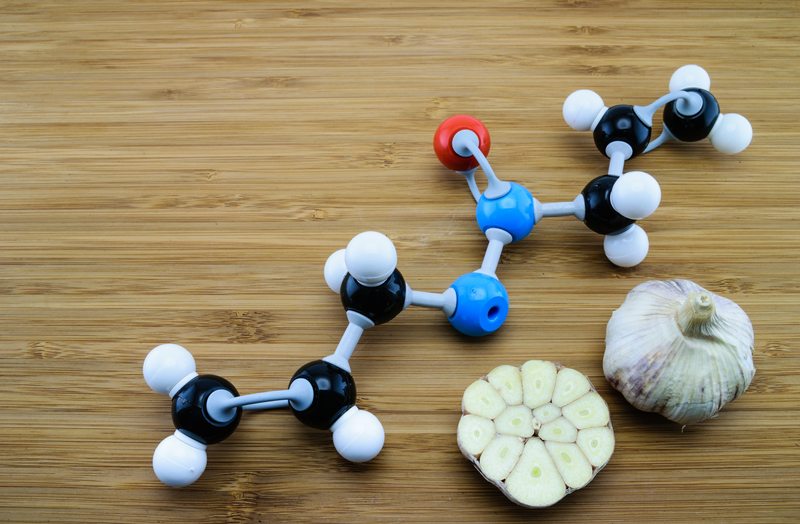You probably haven’t given much thought to the chemical composition of garlic. Most of us don’t spend time thinking about these things. That said, it turns out that garlic has amazing health benefits because of a single compound.
What is it, and what does it do? Those are the questions we’ll answer in this article.
What Is the Compound in Garlic?
The primary biological component of garlic is called allicin. While you can get the benefits of allicin by eating garlic, it is not actually found as a component in fresh garlic. Instead, there are two precursors of allicin called alliinase and alliin, which are in separate parts of the garlic plant.
When fungi and bacteria attack a garlic plant, it releases these components to make allicin, which is deadly to them. It’s this chemical reaction that explains garlic’s powerful antibacterial and antifungal properties.
One of the tricky things about allicin is that it doesn’t last long after it is created. It has the same distinctive aroma that we associate with garlic, but it quickly decomposes into other sulfur-containing compounds, such as diallyl disulfide.
What Are the Health Benefits of Allicin?
Sometimes, people make health claims about food that aren’t supported by research. However, that’s not the case with allicin. Its many health benefits are well-documented.
Let’s start with what allicin can do to fight dangerous bacterial infections. You already know that allicin is a protective compound that exists to shield the garlic plant from attacks. It can do the same for the human body.
One study found that allicin killed a wide variety of harmful bacteria, including E.coli and Candida albicans, the microorganism that causes yeast infections. It was also useful against intestinal parasites such as Entamoeba histolytica and Giardia lamblia.
Another impressive health benefit is that allicin inhibits the growth of cancer cells. A study from 2003 found that allicin induced apoptosis (cell death) in certain cancer cells. More research is needed, but the preliminary evidence suggests that allicin might be useful both as a treatment for cancer and as a preventive measure against it.
The next thing you should know is that allicin is a powerful antioxidant that protects the body from oxidative stress. If you have ever cut open an apple and watched it turn brown as it’s exposed to the air, then you have seen what oxidative damage can do.
The benefit of adding antioxidants like allicin to your diet is that it can help counter oxidative stress, which occurs when a cell loses an electron. That turns the cell into a free radical and may set off a chain reaction of damage. Antioxidants halt the damage by “lending” an electron to a damaged cell.
One study found that both allicin and its precursor, alliin, had antioxidant properties. In other words, taking it may help protect your body from the effects of physical stress and oxidative damage.
Finally, another benefit that needs further study but is very promising is that allicin may have a positive impact on cholesterol levels. A study looked at allicin in relation to the lipid profiles of rabbits and found that taking allicin lowered their levels of LDL cholesterol over time. Additional research is needed, including research on human subjects, but the preliminary results are encouraging.
Conclusion
Allicin is the compound that gives garlic its distinctive flavor. However, it’s also responsible for the many health benefits of garlic. Research such as the studies cited in this article indicates that eating garlic or taking a garlic supplement may have substantial health benefits.
Looking for a way to get Garlic into your daily routine? Here's A Great Way To Get Garlic Into Your Diet Without Having To Cook With It Daily… PLUS NO GARLIC BREATH!
References:




What did you think about this article?